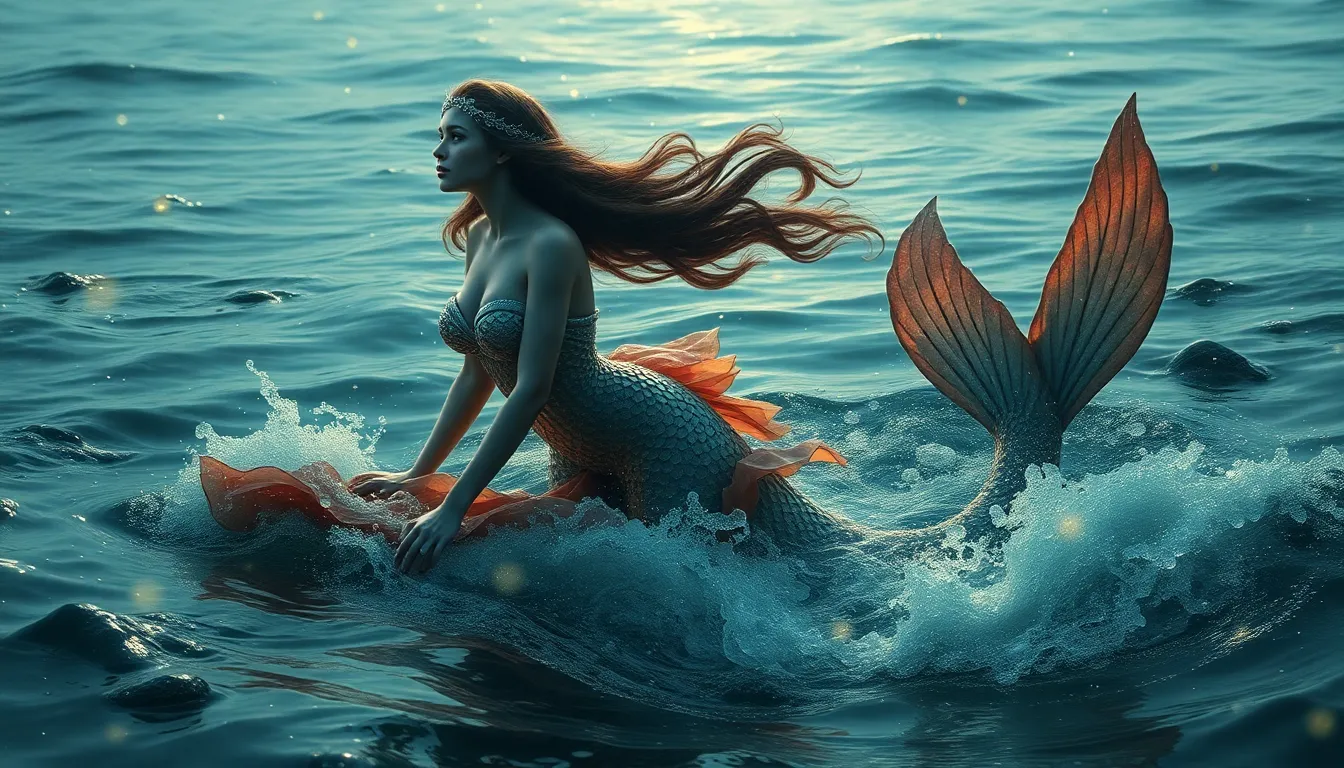The Mermaid’s Song: Exploring the Legends of Sea Women Around the World
I. Introduction
The enchanting world of mermaid mythology has captivated human imagination for centuries. These mythical sea women, often depicted with the upper body of a woman and the tail of a fish, symbolize the mystery and allure of the ocean. From ancient tales to contemporary stories, mermaids represent not just beauty but also the complex relationship between humanity and the sea.
Sea women hold significant importance in folklore and culture across the globe. They embody the dualities of danger and seduction, nurturing and destruction, reflecting society’s perceptions of femininity and nature. This article aims to explore various legends surrounding sea women from different cultures, tracing their origins, significance, and the enduring legacy they hold in modern society.
II. The Origins of Mermaid Legends
A. Historical roots in ancient civilizations
The concept of mermaids can be traced back to ancient civilizations, where water was revered as a source of life and fertility. In Babylonian mythology, the goddess Atargatis transformed into a fish, exemplifying the blending of feminine and aquatic symbolism. Similarly, ancient Assyrian texts reference the fish-tailed goddess, highlighting the long-standing connection between women and water.
B. Cultural significance of water and the feminine
Water has been a powerful symbol across cultures, often associated with emotions, intuition, and the subconscious. The feminine aspect of water is reflected in the nurturing qualities attributed to sea women, who are seen as guardians of the ocean’s depths and its secrets.
C. Evolution of the mermaid archetype
Over time, the archetype of the mermaid has evolved, influenced by societal changes and cultural exchanges. From benevolent figures to dangerous seductresses, mermaids have embodied various traits that reflect human fears and desires surrounding the unknown, particularly the vastness of the sea.
III. Mermaids in European Folklore
A. The Sirens of Greek mythology
In Greek mythology, Sirens are often mistaken for mermaids. These enchanting creatures lured sailors to their doom with their beautiful songs. The Sirens symbolize temptation and the perilous nature of desire, representing the darker side of the mermaid myth.
B. The Selkies of Celtic traditions
In Celtic folklore, Selkies are seal-like beings capable of shedding their skins to become human. These tales often center around themes of love and loss, as human relationships with Selkies frequently end in tragedy when the creatures are forced to return to the sea.
C. The enchanting mermaids of Scandinavian stories
Scandinavian folklore features various mermaid-like beings, including the “Havfrue” or sea woman, who are often depicted as protectors of the sea. These legends illustrate the dual nature of mermaids as both guardians and potential threats to sailors.
IV. Sea Women in African Mythology
A. The Mami Wata and her duality
Mami Wata is a prominent water spirit in African mythology, revered in various cultures across the continent. Often depicted as a beautiful woman with long hair, she embodies both nurturing and destructive aspects, reflecting the complexities of femininity and nature.
B. Coastal tribes and their water spirits
Many coastal tribes in Africa hold beliefs in water spirits that protect their communities. These spirits are integral to local traditions and are often invoked in rituals to ensure safe fishing and bountiful catches.
C. Role of sea women in rituals and healing practices
Sea women play a significant role in healing traditions, with rituals often centered around water to invoke blessings and protection. Their presence in these practices highlights the deep connection between women, water, and spirituality in African cultures.
V. The Asian Perspective on Sea Women
A. The Ningyo of Japanese folklore
The Ningyo, a creature from Japanese folklore, is often described as a fish with a human head. Legends state that eating Ningyo flesh grants immortality, emphasizing the mystical nature of this sea creature and its connection to the human experience.
B. The legends of the Mazu goddess in Chinese culture
Mazu is a revered sea goddess in Chinese culture, protecting fishermen and sailors during their voyages. Her worship reflects the deep respect for the sea and the belief in divine intervention in human affairs.
C. Mermaids in Southeast Asian traditions
In Southeast Asia, mermaid myths vary across cultures, with many societies attributing healing powers to these sea women. They are often seen as mediators between the human world and the ocean, emphasizing the significance of water in local belief systems.
VI. Indigenous Perspectives on Sea Women
A. The significance of water spirits in Native American cultures
In Native American cultures, water spirits are revered as essential guardians of the natural world. Many tribes have stories of sea women who embody the spirit of the water, highlighting the interconnectedness of life and the environment.
B. The role of women in oceanic myths
Indigenous oceanic myths often feature women as central figures, portraying them as wise and powerful beings that guide their communities in harmony with nature. These narratives reflect the importance of women as custodians of ecological knowledge.
C. Contemporary interpretations and storytelling
Today, indigenous storytellers are reviving these ancient myths, incorporating modern themes of environmentalism and cultural identity. This resurgence emphasizes the relevance of sea women in contemporary society and their role in advocating for ocean conservation.
VII. The Modern Revival of Mermaid Legends
A. Mermaids in popular culture (e.g., films, literature)
Mermaids have made a significant resurgence in popular culture, appearing in films, literature, and art. From Disney’s “The Little Mermaid” to contemporary novels, these representations continue to captivate audiences and inspire new interpretations of the mermaid myth.
B. Impact of social media on the resurgence of mermaid myths
Social media platforms have played a crucial role in the revival of mermaid myths, allowing enthusiasts to share stories, art, and discussions about the cultural significance of sea women. This digital space fosters a community united by a fascination with mermaids and their multifaceted representations.
C. Activism and environmental awareness through mermaid imagery
Many activists use mermaid imagery to raise awareness about ocean conservation and environmental protection. By leveraging the symbolic power of mermaids, they draw attention to pressing issues such as pollution, overfishing, and climate change.
VIII. Conclusion
The diverse representations of sea women across cultures reflect humanity’s complex relationship with the ocean and femininity. From ancient myths to modern interpretations, mermaids continue to inspire wonder and respect for the natural world. The enduring allure of mermaid legends invites us to explore and appreciate the rich cultural heritage of sea women globally, reminding us of the beauty and power of the ocean and its guardians.




